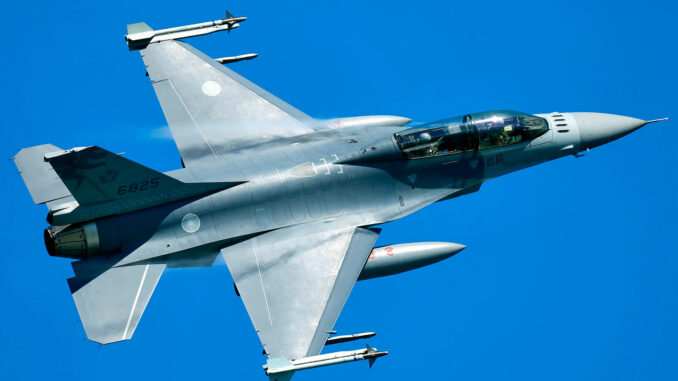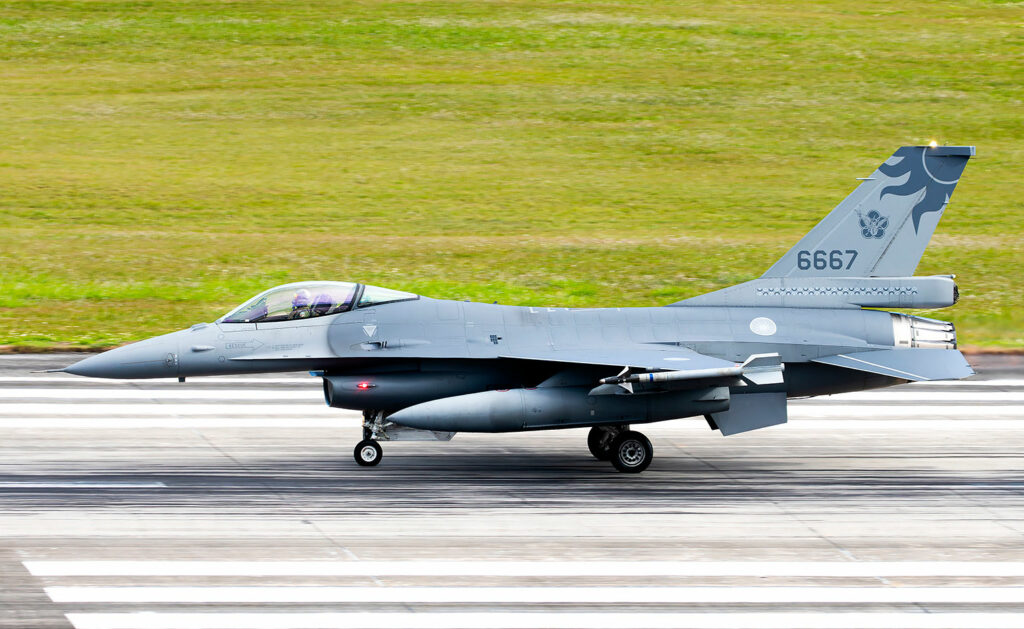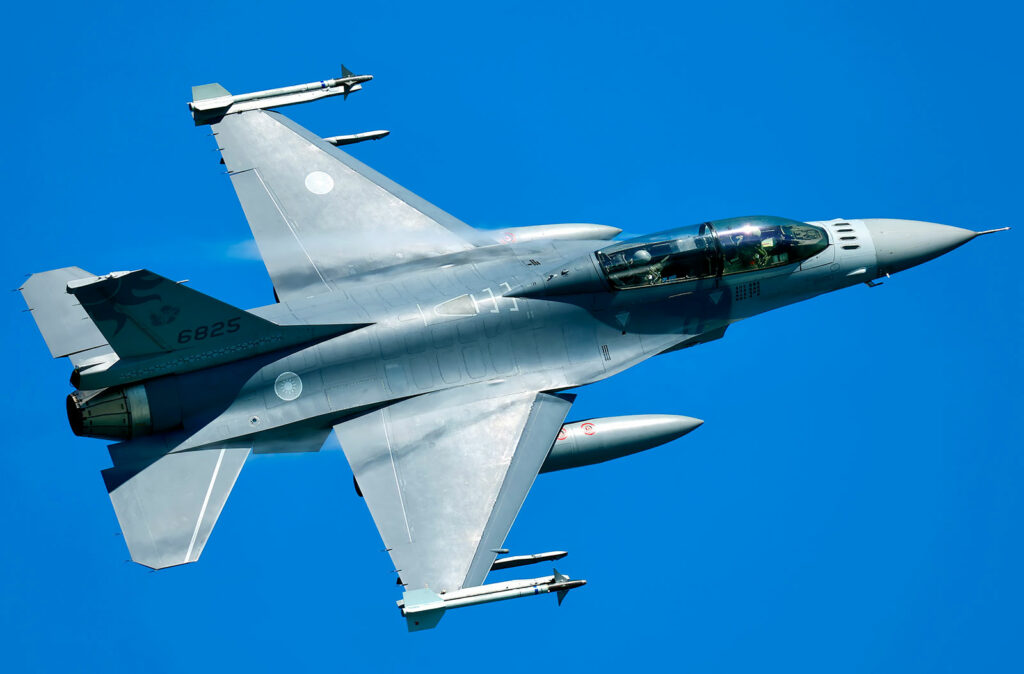
Taiwan reports the incursion of 24 Chinese aircraft, 18 of which have crossed the median line of the Taiwan Strait, intensifying regional tensions.
Taiwan’s Ministry of National Defense (MND) has reported the presence of 24 Chinese aircraft around its airspace, with 18 of them crossing the median line of the Taiwan Strait into the island’s northern, central and southwestern Air Defense Identification Zones (ADIZ). This heightened military activity coincides with Chinese naval maneuvers and strong statements by Beijing asserting its sovereignty over Taiwan. At the same time, China has strengthened its amphibious assault capabilities, notably with the launch of new assault ships and the mass production of floating docks to facilitate landings on Taiwanese beaches. These developments underline the escalation of tensions in the region and China’s determination to assert its military presence around Taiwan.
Chinese air incursions into Taiwanese airspace
Taiwan’s Ministry of National Defense (MND) has reported the detection of 24 Chinese aircraft operating in the vicinity of its airspace. Of these, 18 crossed the median line of the Taiwan Strait, entering the island’s northern, central and southwestern Air Defense Identification Zones (ADIZ). This median line, although not officially recognized by Beijing, has long served as a tacit border to avoid direct confrontation between the two sides. The violation of this line by a significant number of Chinese military aircraft represents a significant escalation of tensions in the region.
These incursions are not isolated incidents. They are part of a series of intensified military activities by China around Taiwan. For example, in October 2024, Taiwan detected a record 153 Chinese aircraft in a single day in the vicinity of its airspace. These repeated operations are designed to test and exhaust Taiwan’s air defense capabilities, while asserting China’s military presence in the region.

Naval manoeuvres and Beijing’s declarations
Alongside the air activities, MND also observed 19 People’s Liberation Army (PLA) aircraft, eight Chinese navy (PLAN) vessels and one official ship operating in the area until 6am (UTC+8) on Saturday. Of these aircraft, 15 also crossed the median line, entering Taiwan’s northern and southwestern ADIZs. The simultaneous presence of these air and naval units suggests increased coordination of Chinese forces to exert multidimensional pressure on Taiwan.
These military operations coincide with strong statements by Beijing regarding its sovereignty over Taiwan. Following the passage of two American ships through the Taiwan Strait, China reiterated its position that Taiwan is an inalienable part of its territory. Foreign Ministry spokesman Guo Jiakun said: “I would like to emphasize that Taiwan is an inalienable part of Chinese territory. The Taiwan issue has nothing to do with freedom of navigation, but concerns China’s sovereignty and territorial integrity.” This statement underlines Beijing’s sensitivity to actions perceived as foreign interference in what it considers its internal affairs.
Strengthening China’s amphibious capabilities
As part of its strategy to strengthen its ability to project military power, China has recently stepped up efforts to improve its amphibious assault capabilities. Notable developments include the official launch of an advanced LHA (Landing Helicopter Assault) amphibious assault ship and the mass production of floating docks designed to facilitate the unloading of ships during beach landings.
The new-generation amphibious assault ship, named “Sichuan”, was launched in Shanghai in November 2024. This vessel, with an estimated displacement of 36,000 tonnes, is capable of carrying some thirty helicopters and simultaneously deploying six of them from its flight deck. This capability gives the Chinese navy greater flexibility to carry out complex amphibious operations, including landings on defended coasts.
At the same time, China has commissioned modular floating docks, designed to facilitate the rapid unloading of troops, vehicles and heavy equipment during landing operations. These infrastructures overcome the challenges posed by the lack of suitable ports on certain coasts, by creating temporary entry points for amphibious forces. The integration of these docks into naval operations underlines Beijing’s desire to improve its military logistics and its ability to carry out large-scale operations far from its main bases.
Geopolitical consequences and regional implications
The intensification of Chinese military activities around Taiwan has significant repercussions on regional stability and international relations. Repeated air incursions, combined with naval exercises and amphibious reinforcements, increase the risk of accidental confrontation between Taiwanese and Chinese forces. Taiwan, which has its own defense system, including Patriot PAC-3 missile batteries and modernized F-16V fighters, is forced to mobilize its air and naval forces on a regular basis to intercept and monitor People’s Liberation Army (PLA) movements.
China’s military build-up around Taiwan is also putting increasing pressure on the island’s allies, notably the United States and Japan. Washington has reaffirmed its commitment to supporting Taiwan, notably through arms sales and joint exercises in the Indo-Pacific region. In 2023, the US Congress approved a €10 billion military aid package to modernize Taiwan’s military, including missile defense systems and advanced drones. Japan, meanwhile, has strengthened its defense capabilities in the Ryukyu Islands region, close to Taiwan, to deter any military escalation.
The European Union is keeping a close eye on developments, although it is adopting a more cautious stance than the United States. However, several European countries have expressed their support for Taiwan, notably through diplomatic visits and enhanced economic agreements. France and Germany, for example, recently authorized the transit of warships close to the Taiwan Strait, sending a signal of tacit support for the island’s sovereignty.
The economic impact of rising tensions around Taiwan
The tense military situation around Taiwan is also having an impact on the global economy. The island is a key player in the production of semiconductors, a strategic sector for many industries, from telecommunications to automobiles. Taiwan Semiconductor Manufacturing Company (TSMC) produces around 60% of the world’s advanced semiconductors, and any disruption in the region could cause a major crisis in supply chains.
In response to the threat from China, TSMC has begun to diversify its production by building new plants in the USA and Japan. The aim is to reduce dependence on Taiwanese production and ensure continuity in the event of military escalation. However, a possible Chinese attack or blockade of Taiwan would have an immediate impact on global financial markets, with losses estimated at several hundred billion euros.

Taiwan’s evolving defense strategies in the face of the Chinese threat
Faced with increasing Chinese military threats, Taiwan has adopted a new defense strategy, known as the “Hedgehog Strategy”. This approach aims to make any invasion extremely costly for China by strengthening the island’s asymmetrical defense capabilities. Taiwan is investing heavily in anti-ship missiles, surveillance drones and electronic warfare systems to counter Chinese incursions.
At the same time, the Taiwanese government has announced an extension of compulsory military service from four months to one year, in order to strengthen the preparation of the armed forces. This decision is aimed at increasing the number of soldiers ready to defend the island in the event of conflict. In addition, joint exercises with regional partners, notably the USA and Japan, are regularly organized to improve the interoperability of forces.
The development of cyber defense capabilities is also a priority for Taiwan. Computer attacks against the island’s critical infrastructure increased by 40% in 2024, and the Taiwanese authorities are working closely with American and European companies to strengthen their cybersecurity systems.
Future prospects and conflict risks
Developments around Taiwan depend largely on the decisions taken by Beijing and Washington. A blockade or direct military action by China against Taiwan would represent a major turning point for the region and could trigger an international reaction, with severe economic sanctions against Beijing. In response, China could retaliate by limiting access to rare earths, a market it controls to over 60%, and on which Western industries depend.
The American factor remains central to the strategic equation. An intensification of US military support for Taiwan, including the deployment of troops or new bases in the region, could accelerate the escalation of tensions. Similarly, the position of Japan, which is strengthening its military capabilities and cooperation with Taiwan, could play a key role in the years ahead.
The situation around Taiwan remains highly volatile, with strategic, economic and military implications on a global scale. The intensification of Chinese air and naval incursions, combined with Taiwan’s strengthened defense capabilities and the commitments of its allies, point to an uncertain future, where any miscalculation could lead to conflict on a massive scale.
War Wings Daily is an independant magazine.